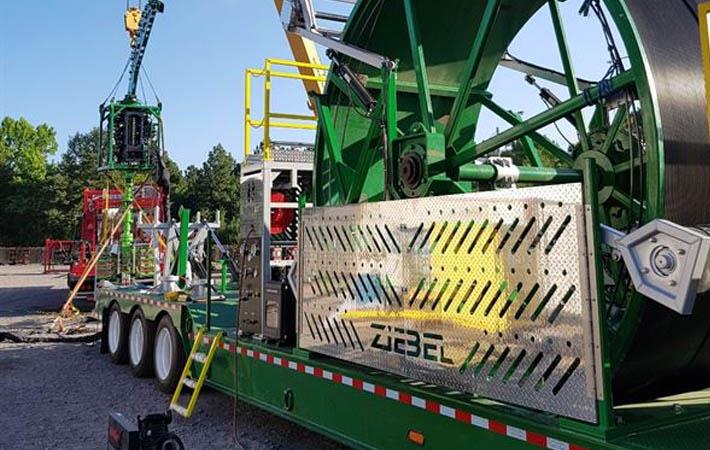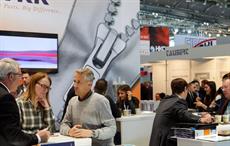Exel Composites company Diversified Structural Composites (DSC) has manufactured fibre optic-embedded carbon composite rod for Norwegian company Ziebel’s innovative well intervention system. The rod with fibre optic core functions as a sensor, gathering valuable real-time insight on well behaviour, a function unattainable using conventional methods.
DSC’s expertise in carbon fibre pultrusion enabled the precision manufacture of the rod with 15 mm diameter.Exel Composites company Diversified Structural Composites (DSC) has manufactured fibre optic-embedded carbon composite rod for Norwegian company Ziebel's innovative well intervention system. The rod with fibre optic core functions as a sensor, gathering valuable real-time insight on well behaviour, a function unattainable using conventional methods.#
Ziebel was founded in 2006 with the vision to become a significant contributor to increased oil recovery factors through innovative technology and solutions. In order to make informed decisions, oil drilling and completions teams need detailed information on fluid flow in and around the borehole during production or injection. Such data is usually collected using production logging tools, but this method is operationally challenging and provides limited, time- and location-specific information.
Ziebel’s proprietary technology, the distributed fibre optic (DFO)-based Z-System, is free of many of the constraints that limit conventional well logging effectiveness, offering improved understanding of well and reservoir behaviour.
At the heart of Ziebel’s Z-System is the DSC-manufactured 6.2 km long, 15 mm diameter carbon fibre rod (the Z-Rod), which delivers multiple fibre optic cables securely into the hostile downhole environment.Typically, the rod is deployed into a producing or injecting well for 48 hours where the fibre optic sensors measure temperature and acoustic vibrations along its length. This enables a variety of applications – including flow allocation, fluid movement visualisation, leak detection and stimulation fluid monitoring – which are extremely valuable for optimal well and reservoir management.
This composite-based sensing system offers further advantages. The carbon rod enables horizontal well access, since the lightweight, stiff composite rod can be 'pushed' from the surface into the horizontal sections frequently employed in today’s wells, which is not possible with conventional tools run on a wireline unless an electrical well tractor is employed.. In addition, the small-diameter carbon rod can access wells with restricted internal diameters and difficult geometry where other tools will not pass, it has minimal choking effect on the well, and unlike metals, it is inert to the majority of hazardous and corrosive substances found in the downhole environment.
Ziebel contacted US-based carbon fibre pultrusion specialist DSC in 2006 to develop and manufacture the robust composite rod required to launch its fibre optic intervention technology in the oil sector.
To ensure the required combination of strength, stiffness and corrosion resistance necessary for this application, DSC selected one of its proprietary, tough epoxy resins and a specific carbon fibre selected through extensive testing to maximise mechanical performance. This resin places particularly challenging demands on the pultrusion process, since it requires a very slow cure in order to attain its optimal properties. This means that to produce each 6.2 km long rod, the pultrusion line must run continuously, without fault, for more than three weeks.
"Because of the high cost of both the carbon fibre and the fibre optics, the process risk is very high," David Lewis, DSC's director of Technology and Business Development explains. "We've therefore performed extensive work to develop a pultrusion process that is extremely robust and foolproof, and exceptional process controls are in place to ensure that there are no failures."
Ziebel and DSC have worked together to optimise a spooling technology to facilitate the handling and transport of long lengths of pultruded rod. This enables the stiff carbon fibre rod to be wound onto reels that are small enough in diameter to allow shipping from DSC’s production facilities in Erlanger, Kentucky, to Europe and the Middle East as well as within the US. (SV)
Fibre2Fashion News Desk – India


